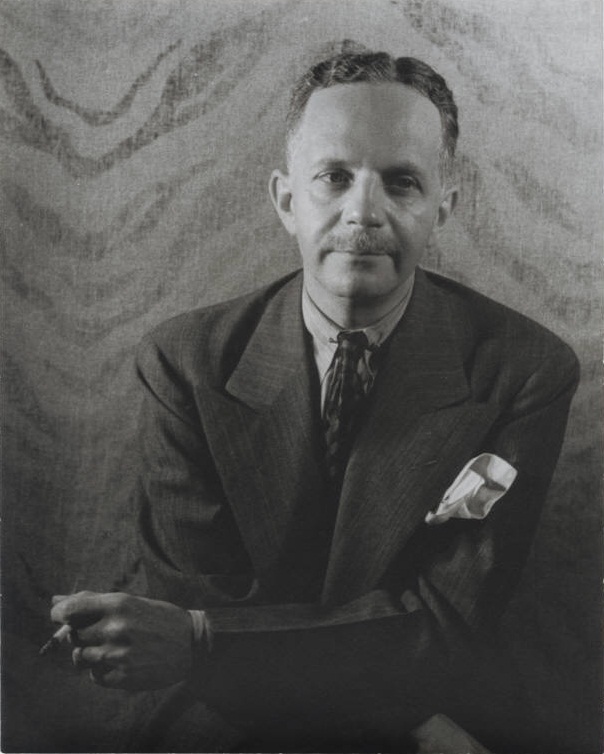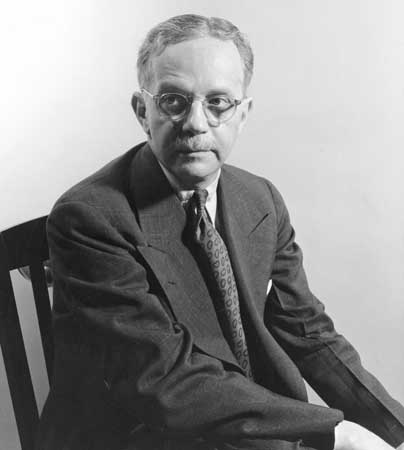<Back to Index>
- Civil Rights Activist and Writer Walter Francis White, 1893
PAGE SPONSOR



Walter Francis White (July 1, 1893, Atlanta, Georgia - March 21, 1955, New York, New York) was a civil rights activist who led the National Association for the Advancement of Colored People (NAACP) for almost a quarter of a century and directed a broad program of legal challenges to segregation and disfranchisement. He was also a journalist, novelist and essayist. He graduated from Atlanta University in 1916 (now Clark Atlanta University). In 1918 he joined the small national staff of the National Association for the Advancement of Colored People in New York at the invitation of James Weldon Johnson, where he acted as Johnson's assistant national secretary. White later succeeded Johnson as the head of the NAACP, serving from 1931 to 1955.
White oversaw the plans and organizational structure of the fight against public segregation. Under his leadership, the NAACP set up the Legal Defense Fund, which raised numerous legal challenges to segregation and disfranchisement, and achieved many successes. Among these was the Supreme Court ruling in Brown v. Board of Education, which determined that segregated education was inherently unequal. White was the virtual author of President Truman's presidential order desegregating the armed forces after the Second World War. White also quintupled NAACP membership to nearly 500,000.
White was the fourth of seven children born in Atlanta to George W. White and Madeline Harrison. They belonged to the influential First Congregational Church, founded after the Civil War by freedmen and the American Missionary Association, based in the North. Among the new middle class of blacks, both of the Whites ensured that Walter and each of their children got an education. When White was born, George had graduated from Atlanta University and was a postal worker. Madeline had graduated from Clark University and became a teacher. Of mixed race with African and European ancestry, White's appearance showed his high proportion of European ancestry. He emphasized in his autobiography, A Man Called White (p. 3): "I am a Negro. My skin is white, my eyes are blue, my hair is blond. The traits of my race are nowhere visible upon me." Five of his great - great - great - grandparents were black and the other 27 were white. All of his family were light - skinned, and his mother Madeline was also blue - eyed and blonde. Her maternal grandparents were Dilsia, a slave, and Dilsia's master William Henry Harrison, who much later became president of the United States. Madeline's mother Marie Harrison was one of Dilsia's mixed race daughters by Harrison, and her father Augustus Ware was a white man. Despite his family's ancestry being mostly white and himself being blond - haired, blue - eyed, and very fair, White and his family identified as black and lived among the Atlanta black community. In the earlier stages of his career White took advantage of his features to make investigations in the South, passing for white to gather information more freely and protected on violations of civil and human rights such as lynchings and hate crimes in socially hostile environments. He involved himself in KKK groups in the South in order to expose those involved in lynchings and other murders, and was forced to escape on a train after learning threats of a black man passing for a white was being hunted down to be lynched.
After graduating in 1916 from Atlanta University, a historically black college, White's first job was with the Standard Life Insurance Company, one of the new and most successful businesses started by African Americans in Atlanta. He also worked to organize an NAACP chapter in Atlanta; the organization had been set up several years before and White was supportive of their work. He and other leaders were successful in getting the Atlanta School Board to support improving education for black children.
At the invitation of James Weldon Johnson, White moved to New York and in 1918 started working at the national headquarters of the NAACP.
White married Gladys Powell in 1922. They had two children, Jane White, who became an actress on Broadway and television; and Walter Carl Darrow White, who lived in Germany for much of his adult life.
The Whites' long marriage ended in divorce in 1949. (Furious at his father for his actions, from then the son used as his name only "Carl Darrow".)
That same year, White married Poppy Cannon, a white South African magazine editor. They lived together for the rest of his life.
Sinclair Lewis' 1947 novel, Kingsblood Royal, about a man who appears to be white but learns late in life that he is black, has characters based in part on White and his professional circles, many of whom were of mixed race and among the educated elites of black society, with relatives or friends who had chosen to live as white based on appearance. Lewis consulted White on the novel and White helped him meet numerous professional acquaintances. While some white critics found the novel contrived, the prominent African - American magazine Ebony named it the best novel of the year.
White used his appearance to increase his effectiveness in conducting investigations of lynchings and race riots in the American South. He could "pass" and talk to whites, but also managed to identify himself as black and talk to the African - American community. Such work was dangerous, but he investigated 41 lynchings and eight race riots while working with the NAACP.
One of the first riots he investigated was that of October 1919 in Elaine, Arkansas, where white vigilantes and Federal troops in Phillips County killed more than 200 black sharecroppers. The case had both labor and racial issues. The white militias had come to the town and hunted down blacks in retaliation for the killing of a white man. He was killed in a shootout at a church where black sharecroppers were meeting on issues related to organizing with an agrarian union.
White was granted credentials from the Chicago Daily News. That enabled him to obtain an interview with Governor Charles Hillman Brough of Arkansas, who would not have met with him as the representative of the NAACP. Brough gave White a letter of recommendation to help him meet people, and his autographed photograph.
White was in Phillips County for only a brief time before his identity was discovered; he took the first train back to Little Rock. The conductor told him that he was leaving "just when the fun is going to start", because they had found out that there was a "damned yellow nigger down here passing for white and the boys are going to get him." Asked what they would do to him, the conductor told White, "When they get through with him he won't pass for white no more!" "High yellow" was a term used at the time to refer to white - appearing blacks, mostly those of mixed racial descent.
White published his findings about the riot and trial in the Daily News, the Chicago Defender and The Nation, as well as the NAACP's own magazine The Crisis. Governor Brough asked the United States Postal Service to prohibit the mailing of the Chicago Defender and Crisis to Arkansas, while others attempted to enjoin distribution of the Defender at the local level.
The NAACP put together a legal defense of the men convicted and carried the case to the Supreme Court. Its ruling overturned the Elaine convictions and established important precedent about the conduct of trials. The Supreme Court found that the original trial was held under conditions that adversely affected the defendants' rights. Some of the courtroom audience were armed, as were a mob outside, so there was intimidation of the court and jury. The 79 black defendants had been quickly tried: 12 were found guilty of murder and sentenced to death; 67 were condemned to sentences from 20 years to life. No white man was prosecuted for the many black deaths.
During the McCarthy era, White did not criticize McCarthy’s actions in Congress. He feared a backlash might cost the NAACP its tax exempt status and lead to equating Civil Rights with Soviet Communism. He criticized singer/activist Paul Robeson, who was accused of pro-Soviet leanings, and alongside Roy Wilkins, editor of The Crisis, arranged for Paul Robeson: Lost Shepherd, a leaflet written under pseudonym to be printed and distributed.
Through his cultural interests and his close friendships with white literary power brokers Carl Van Vechten and Alfred A. Knopf, White was one of the founders of the "New Negro" cultural flowering. Popularly known as the "Harlem Renaissance", the period was one of intense literary and artistic production, with Harlem becoming the center of black American intellectual and artistic life. It attracted creative people from across the nation, as did New York City in general.
Writer Zora Neale Hurston accused Walter White of stealing her designed costumes from her play The Great Day. White never returned the costumes to Hurston even after she pleaded to him via mail.
White was the author of critically acclaimed novels: Fire in the Flint (1924) and Flight (1926). His non-fiction book Rope and Faggot: A Biography of Judge Lynch (1929) was a study of lynching. Additional books were A Rising Wind (1945), his autobiography A Man Called White (1948), and How Far the Promised Land (1955). Unfinished at his death was Blackjack, a novel on Harlem life and the career of an African - American boxer.
- 1927 – White received the Harmon Award (William E. Harmon Foundation Award for Distinguished Achievement among Negroes) for his book Rope and Faggot: An Interview with Judge Lynch, a study of lynching.
- 1937 – Awarded the Spingarn Medal by the NAACP, for outstanding achievement by an African American.
- 2002 – Molefi Kete Asante listed Walter Francis White on his list of 100 Greatest African Americans.
- 2009 – White was inducted into the Georgia
Writers Hall of Fame.